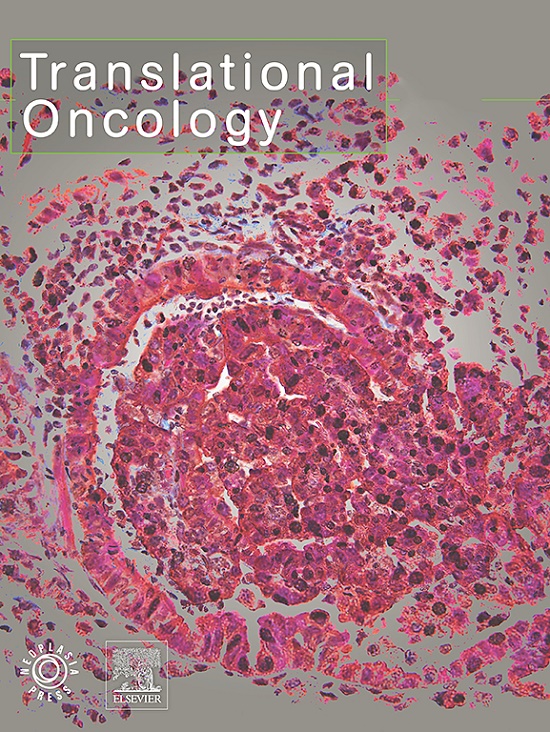Predicting overall survival in hepatocellular carcinoma patients via a combined MRI radiomics and pathomics signature
IF 5
2区 医学
Q2 Medicine
引用次数: 0
Abstract
Objective
This study aims to develop and validate a radiopathomics model that integrates radiomic and pathomic features to predict overall survival (OS) in hepatocellular carcinoma (HCC) patients.
Materials and methods
This study involved 126 HCC patients who underwent hepatectomy and were followed for more than 5 years. Radiomic features were extracted from arterial-phase (AP) and portal venous-phase (PVP) MRI scans, whereas pathomic features were obtained from whole-slide images (WSIs) of the HCC patients. Using LASSO Cox regression, both radiomics and pathomics signatures were established. A combined radiopathomics nomogram for predicting OS was constructed and validated. The correlation between the radiopathomics nomogram and OS prediction was evaluated, demonstrating its potential clinical utility in prognosis assessment.
Results
We selected four radiomic features from the AP and PVP MRI scans to construct a signature, achieving a concordance index (C-index) of 0.739 in the training cohort and 0.724 in the validation cohort; these results indicate favourable 5-year OS prediction. Similarly, from 1,141 pathomics features extracted from WSIs, 15 were chosen for a pathomics signature, which had C-indexes of 0.821 and 0.808 in the training and validation cohorts, respectively. The most robust performance was delivered by a radiopathomics nomogram, with C-index values of 0.840 in the training cohort and 0.875 in the validation cohort. Decision curve analysis (DCA) confirmed the highest net benefit achievable by the combined radiopathomics nomogram.
Conclusion
Our findings indicate that the radiopathomics nomogram can serve as a predictive marker for hepatectomy prognosis in HCC patients and has the potential to enhance personalized therapeutic approaches.
通过磁共振成像放射组学和病理组学联合特征预测肝细胞癌患者的总生存期。
目的:本研究旨在开发和验证一种放射病理组学模型,该模型综合了放射学和病理学特征,可预测肝细胞癌(HCC)患者的总生存率(OS):本研究旨在开发和验证一种放射病理组学模型,该模型综合了放射组学和病理组学特征,可预测肝细胞癌(HCC)患者的总生存率(OS):本研究涉及126名接受肝切除术并随访5年以上的HCC患者。从动脉期(AP)和门静脉期(PVP)MRI扫描中提取放射学特征,而病理学特征则从HCC患者的全滑动图像(WSI)中获得。通过 LASSO Cox 回归,建立了放射组学和病理组学特征。构建并验证了用于预测OS的综合放射病理组学提名图。评估了放射病理组学提名图与OS预测之间的相关性,证明了其在预后评估中的潜在临床实用性:我们从 AP 和 PVP MRI 扫描中选取了四个放射病理特征来构建特征,在训练队列中获得了 0.739 的一致性指数(C-index),在验证队列中获得了 0.724 的一致性指数(C-index);这些结果表明了良好的 5 年期 OS 预测。同样,从 WSIs 中提取的 1,141 个病理组学特征中,有 15 个被选为病理组学特征,在训练队列和验证队列中的 C 指数分别为 0.821 和 0.808。放射病理组学提名图的表现最为稳健,在训练组中的C指数值为0.840,在验证组中的C指数值为0.875。决策曲线分析(DCA)证实了综合放射病理组学提名图可实现的最高净效益:我们的研究结果表明,放射病理组学提名图可以作为 HCC 患者肝切除术预后的预测标志物,并有可能增强个性化治疗方法。
本文章由计算机程序翻译,如有差异,请以英文原文为准。
求助全文
约1分钟内获得全文
求助全文
来源期刊

Translational Oncology
ONCOLOGY-
CiteScore
8.40
自引率
2.00%
发文量
314
审稿时长
54 days
期刊介绍:
Translational Oncology publishes the results of novel research investigations which bridge the laboratory and clinical settings including risk assessment, cellular and molecular characterization, prevention, detection, diagnosis and treatment of human cancers with the overall goal of improving the clinical care of oncology patients. Translational Oncology will publish laboratory studies of novel therapeutic interventions as well as clinical trials which evaluate new treatment paradigms for cancer. Peer reviewed manuscript types include Original Reports, Reviews and Editorials.
 求助内容:
求助内容: 应助结果提醒方式:
应助结果提醒方式:


